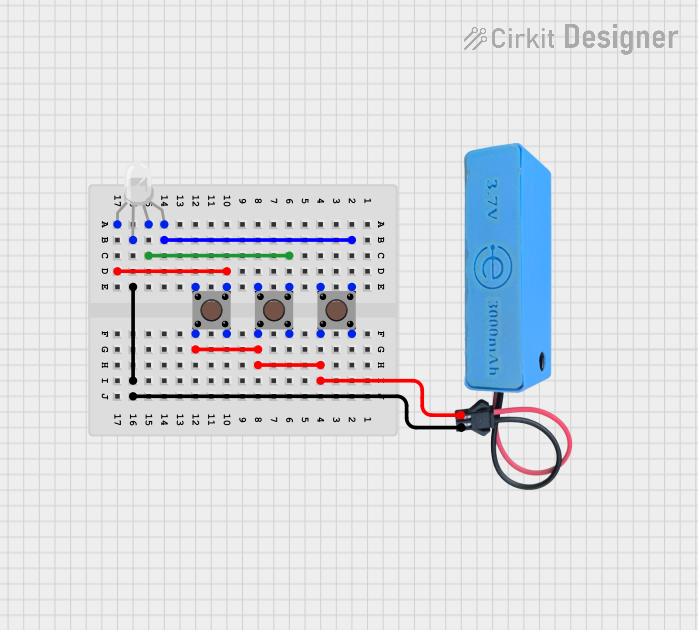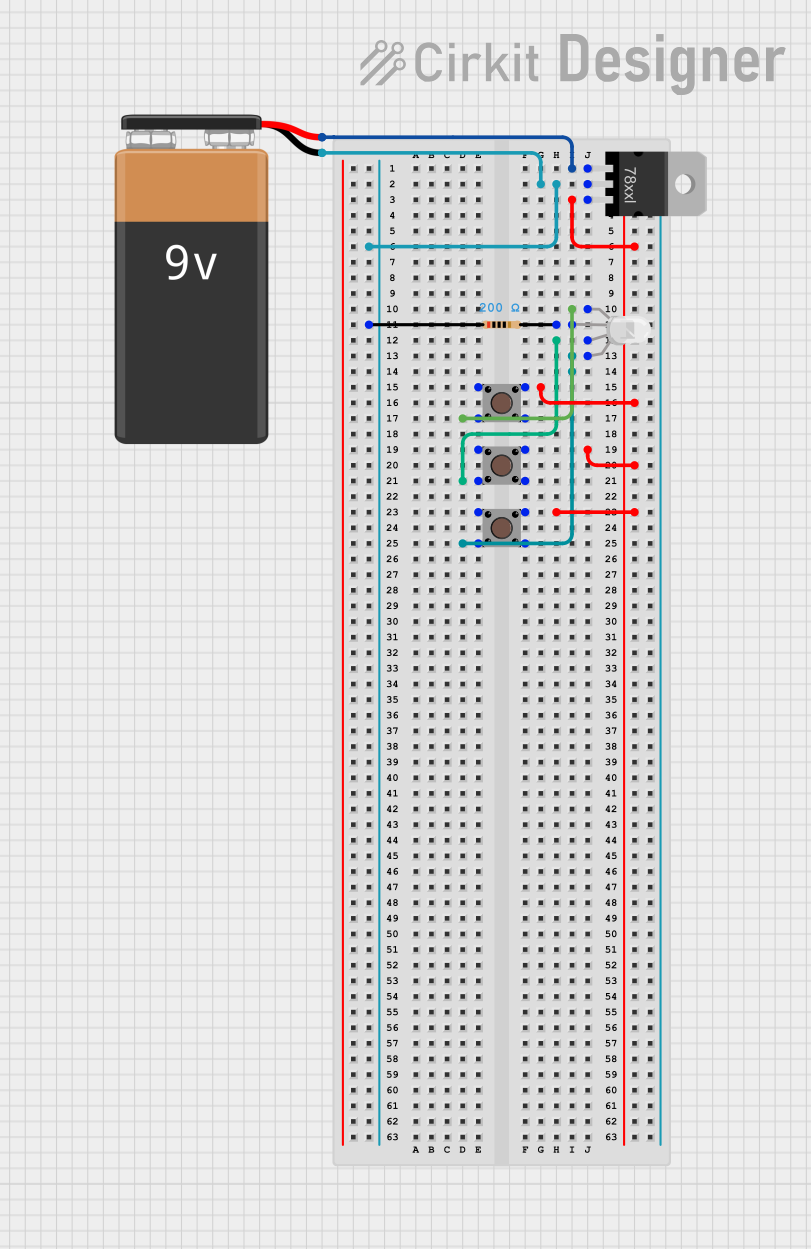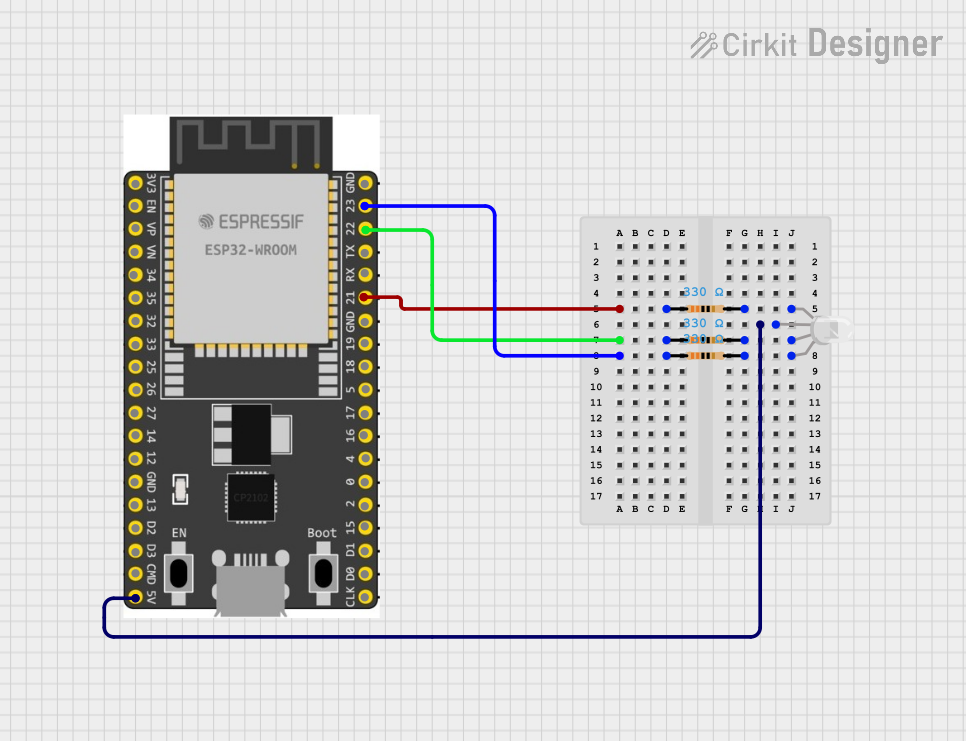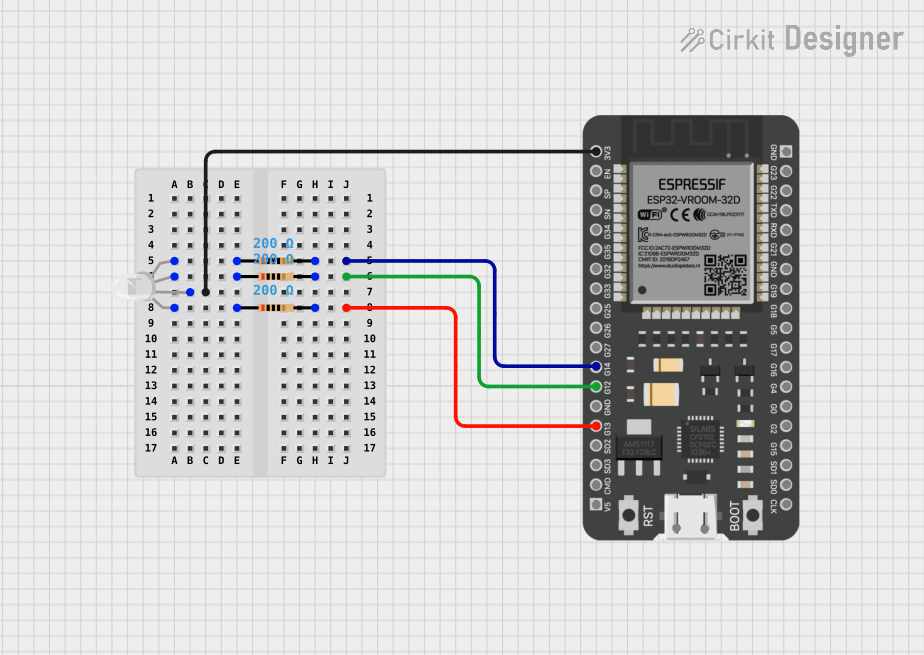
How to Use LED RGB: Examples, Pinouts, and Specs
 Design with LED RGB in Cirkit Designer
Design with LED RGB in Cirkit DesignerIntroduction
An RGB LED is a Light-Emitting Diode that combines Red, Green, and Blue light sources in a single package. By adjusting the intensity of each color, it can produce a wide spectrum of colors, making it a versatile component for color mixing and decorative lighting. Common applications include mood lighting, display panels, and DIY electronics projects with microcontrollers like the Arduino UNO.
Explore Projects Built with LED RGB

 Open Project in Cirkit Designer
Open Project in Cirkit Designer
 Open Project in Cirkit Designer
Open Project in Cirkit Designer
 Open Project in Cirkit Designer
Open Project in Cirkit Designer
 Open Project in Cirkit Designer
Open Project in Cirkit DesignerExplore Projects Built with LED RGB

 Open Project in Cirkit Designer
Open Project in Cirkit Designer
 Open Project in Cirkit Designer
Open Project in Cirkit Designer
 Open Project in Cirkit Designer
Open Project in Cirkit Designer
 Open Project in Cirkit Designer
Open Project in Cirkit DesignerTechnical Specifications
Key Technical Details
- Forward Voltage (Typical): Red: 2.0-2.2V, Green: 3.0-3.2V, Blue: 3.0-3.2V
- Forward Current: 20mA (per channel)
- Luminous Intensity: Varies by color and manufacturer
- Viewing Angle: Typically 120 degrees
Pin Configuration and Descriptions
| Pin Number | Description | Color |
|---|---|---|
| 1 | Common Anode/Cathode | - |
| 2 | Red Anode/Cathode | Red |
| 3 | Green Anode/Cathode | Green |
| 4 | Blue Anode/Cathode | Blue |
Note: The common pin may be either anode or cathode, depending on the type of RGB LED (common anode or common cathode).
Usage Instructions
How to Use in a Circuit
- Identify the Type: Determine if your RGB LED is common anode or common cathode.
- Connect the Pins: Connect the common pin to either VCC (for common anode) or GND (for common cathode).
- Resistors: Connect a current-limiting resistor (typically 220-330 ohms) in series with each of the color anode/cathode pins.
- Control: Use a microcontroller to adjust the voltage (PWM - Pulse Width Modulation) on each color pin to mix colors.
Important Considerations and Best Practices
- Current Limiting: Always use current-limiting resistors to prevent damage to the LED.
- PWM Control: Use PWM to control the brightness of each color for color mixing.
- Heat Dissipation: Ensure proper heat dissipation if driving the LED at high brightness levels.
Example Code for Arduino UNO
// Define the RGB LED pins
const int RED_PIN = 11;
const int GREEN_PIN = 10;
const int BLUE_PIN = 9;
void setup() {
// Set the LED pins as output
pinMode(RED_PIN, OUTPUT);
pinMode(GREEN_PIN, OUTPUT);
pinMode(BLUE_PIN, OUTPUT);
}
void loop() {
// Set the color to purple (Red + Blue)
analogWrite(RED_PIN, 255); // Red at full intensity
analogWrite(GREEN_PIN, 0); // Green off
analogWrite(BLUE_PIN, 255); // Blue at full intensity
delay(1000); // Wait for 1 second
// Set the color to aqua (Green + Blue)
analogWrite(RED_PIN, 0); // Red off
analogWrite(GREEN_PIN, 255); // Green at full intensity
analogWrite(BLUE_PIN, 255); // Blue at full intensity
delay(1000); // Wait for 1 second
}
Note: The above example assumes a common anode RGB LED. For a common cathode, invert the PWM values (use 255 - value).
Troubleshooting and FAQs
Common Issues
- LED Not Lighting Up: Check the polarity of the LED and ensure the common pin is correctly connected.
- Incorrect Colors: Verify that the pins are connected to the correct color channels.
- Dim or Flickering Light: Ensure that the current-limiting resistors are of the correct value and that the power supply is stable.
Solutions and Tips
- Polarity Check: Use a multimeter to confirm the common pin and individual color pins.
- Resistor Values: Recalculate the resistor values if you are using a different supply voltage.
- PWM Frequency: If the LED is flickering, adjust the PWM frequency in your microcontroller code.
FAQs
Q: Can I connect an RGB LED directly to an Arduino without resistors? A: No, you should always use current-limiting resistors to prevent damage to both the LED and the Arduino.
Q: How do I make white light with an RGB LED? A: To create white light, you need to mix red, green, and blue at full brightness. However, the resulting white may not be perfectly balanced due to differences in LED color intensity.
Q: Can I use a single PWM pin to control all three colors? A: No, you need individual PWM control for each color to mix colors effectively.